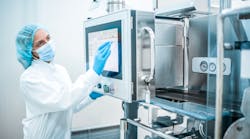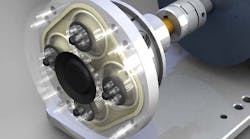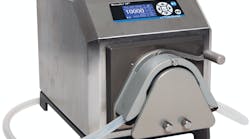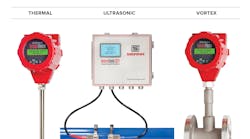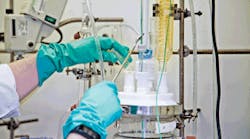During the R&D process as well as for lower initial production volumes, pharma’s liquid measurement and filling is often done by hand.
However, as advances are made through the development process, increasing demand for production volume and product changeover increase, result in significant drawbacks to this approach. With hand filling, some amount of overfilling, underfilling, or product spillage can be expected, which can be costly when handling high-value product. Manual dispensing and measuring can also lead to repetitive stress injuries for employees.
If automated filling systems are used, production is traditionally accomplished with equipment that must be thoroughly disassembled, washed and sterilized between batches. The process is time-consuming, expensive, energy intensive and opens the door to possible cross contamination as well as occasional control breakdowns.
As a solution, a growing number of companies are turning to sterile, single-use, closed liquid dispensing systems and kits. These utilize disposable parts that can be quickly replaced to start the next fill cycle and expedite production changeovers. Such systems reduce the risk of cross contamination since only the single-use components are in contact with the liquids being dispensed.
This approach can also be scaled up to accommodate requirements from R&D to fully automated, GMP manufacturing.
A diagnostics case study
Single-use liquid dispensing has become a trend because of its production flexibility, streamlined production versus cleaning the entire system, and relatively nominal cost, according to Derek Dunn, P. Eng., senior director, Services and Customer Experience, LuminUltra, a biological diagnostic testing company that is also a key supplier of COVID-19 clinical testing reagents for the Government of Canada.
In the case of LuminUltra, the company develops a range of testing solutions. One of these is its 2nd Generation adenosine triphosphate (ATP) test, which measures ATP in water across diverse industries. This requires multiple liquid reagents in different volumes, dispensed into containers of various sizes.
According to Stephen Galpin, a packaging supervisor at LuminUltra, when an existing product line was produced in lower volumes up to six operators were needed to dispense the liquid reagents using pipettes and affix caps and labels. While this was sufficient during R&D and at the initial production levels, continued growth eventually forced the company to decide between increasing staffing or automating the process.
LuminUltra was growing every year and had reached a fork in the road, so management had to decide if they wanted to hire more people just for filling, says Galpin. Ultimately, they decided to automate and re-assign the personnel to other more productive areas.
LuminUltra also sought an efficient process that minimized any potential contamination or reagent degradation. One of the major challenges was avoiding contamination of the reagents, given that the introduction of even small amounts of ATP from unintended sources would quickly degrade the quality of the test, says Galpin.
After searching for a market solution and reviewing multiple bids, LuminUltra selected a single-use liquid measuring and dispensing system that included a pump. Each kit is a complete unit containing intake and discharge tubing, check valves, complete pump parts and a dispensing tip/nozzle. The disposable fluid path kits are assembled and packaged in an ISO Class 7 cleanroom and post-assembly gamma irradiated to eliminate or minimize biological risk and maintain microbial control.
Production downtime is minimized and changeovers accelerated by eliminating the need to disassemble, clean, sterilize and reassemble fluid path components between batches. Changes from one reagent to another takes only a few minutes and requires no special tools. The total start-up time usually takes about 30-minutes, but starting up the automation line is down to about 10 minutes, says LuminUltra’s Dunn.
Dunn says the equipment was customized to fit the available space as well as to accept different container sizes and configurations. Because the volume of each reagent is different, the ability to handle containers of various sizes was important, says Dunn. The process involves multiple reagents. This might involve five-milliliters of reagent for one aspect of the test, nine-milliliters for another, and 125 ml and 250 ml bottles for others.
Despite being customized, the system was easy to use out of the box, allowing LuminUltra to quickly begin dispensing liquids with the needed volume and accuracy. The system can also be easily reconfigured to accommodate a range of fill volumes, dispense profiles, containers and closure types. Custom designed component parts are also available utilizing in-house design and 3D printing, as needed.
According to Dunn, that kind of flexibility facilitates line expansion in the future and would make scale up easier when LuminUltra is ready for it.
Whether pharma companies are in basic R&D, product development or rapidly scaling up through clinical studies to full scale GMP manufacturing, utilizing a modular, single-use liquid dispensing systems that can be scaled up to meet increasing production demands can be a tool to achieve greater production efficiency, flexibility, reliability and profitability.
